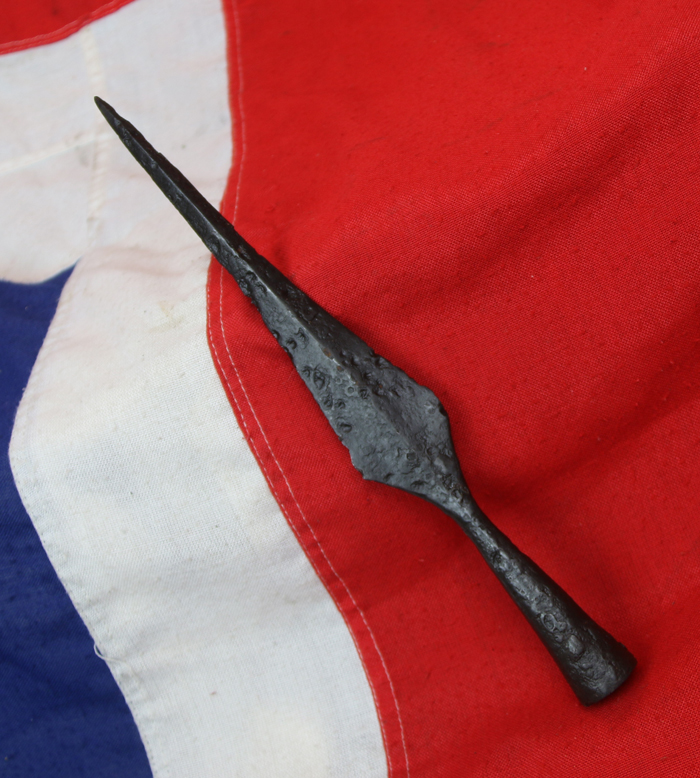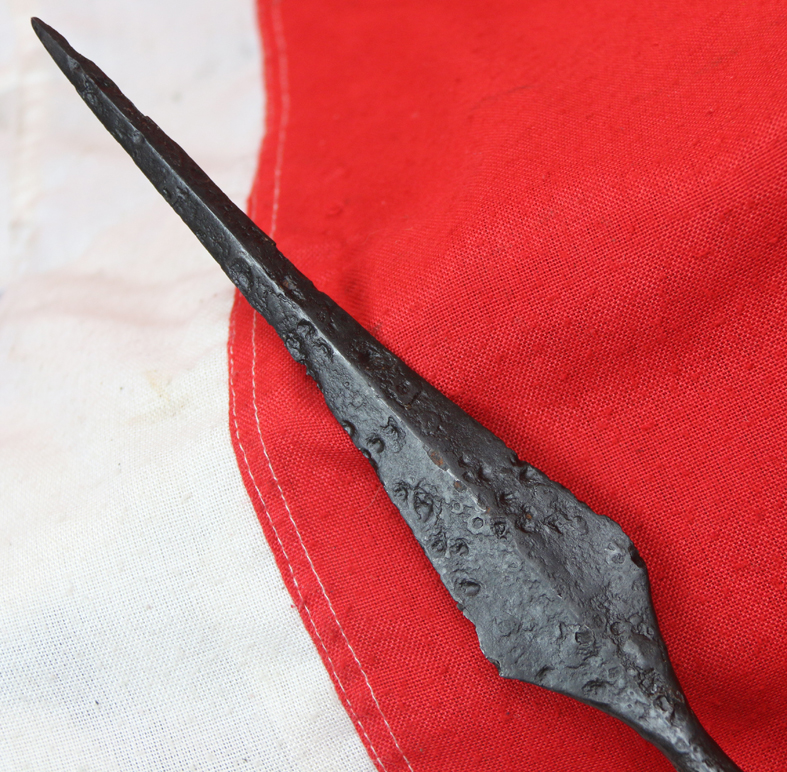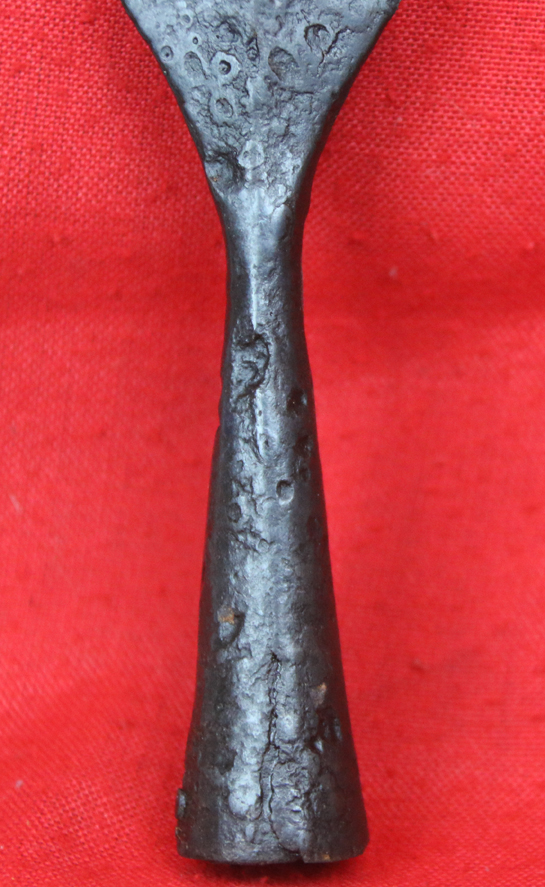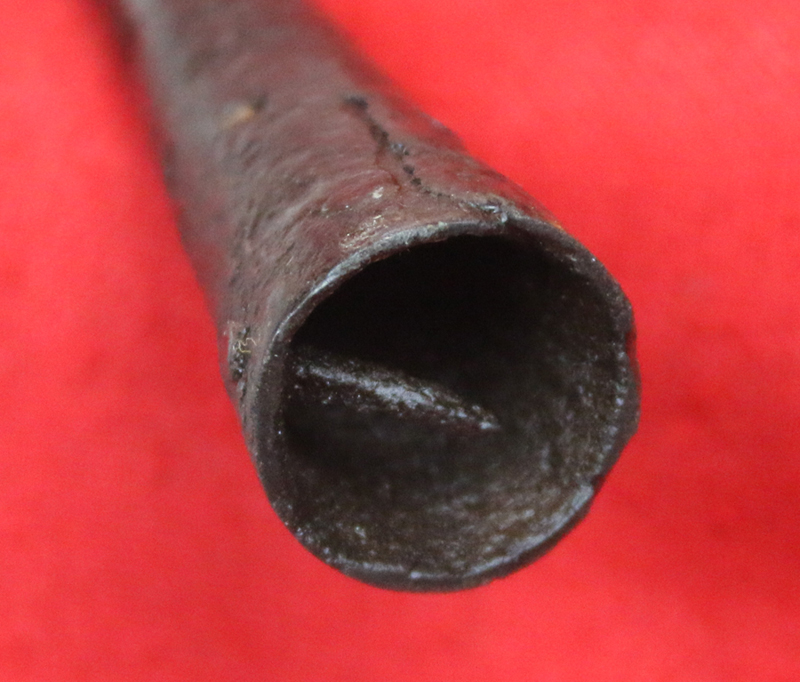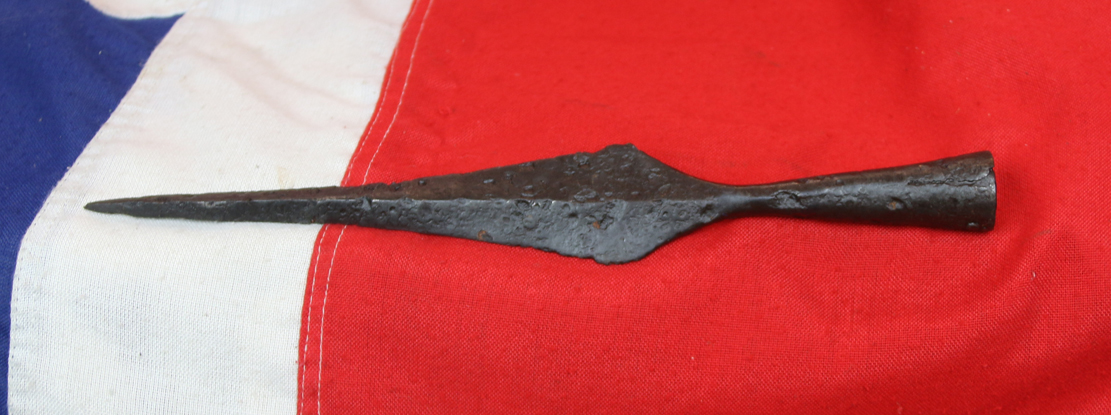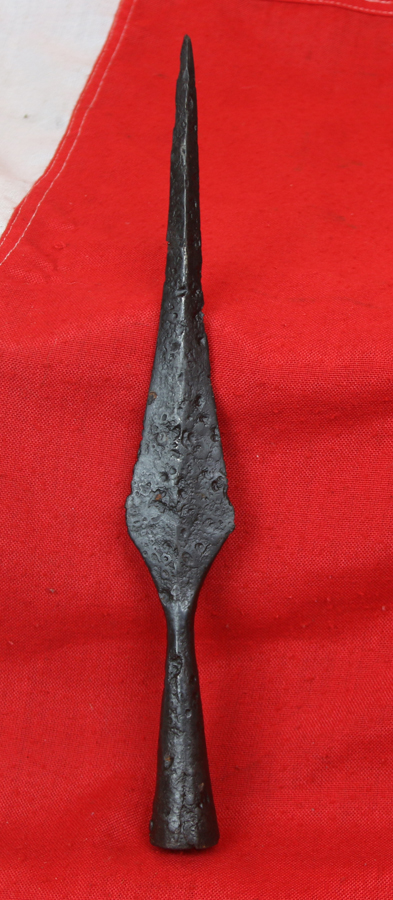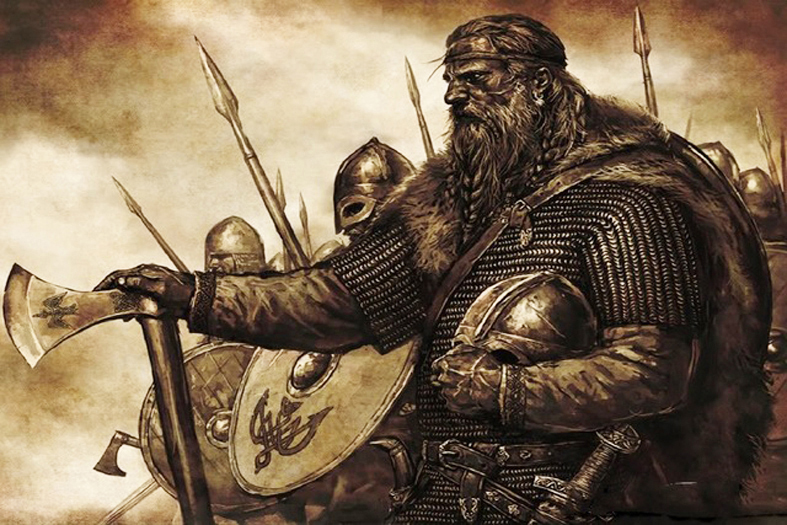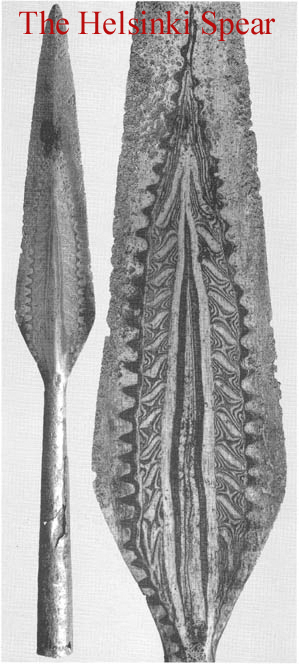A Fine & Most Rare Viking Spear Head, Circa 900 A.D. Socket Mount With Rivet.
This may well be a pattern welded blade in the traditional 'Wolf's Teeth' form but the surface is too russetted to tell, however its shape is very similar to the most famous recovered 'Wolf's Teeth' Viking spear head in Helsinki Museum see gallery. According to the older parts of the Gulating Law, dating back to before the year 900 AD covering Western Norway, a free man was required to own a sword or ax, spear and shield. It was said that Olaf Tryggvason, King of Norway from 995-1000 AD, could throw two spears at the same time. In chapter 55 of Laxdaela saga, Helgi had a spear with a blade one ell long (about 50cm, or 20in). He thrust the blade through Bolli's shield, and through Bolli. In chapter 8 of Kroka-Refs saga, Refur made a spear for himself which could be used for cutting, thrusting, or hewing. Refur split Porgils in two down to his shoulders with the spear. The spearheads were made of iron, and, like sword blades, were made using pattern welding techniques (described in the article on swords) during the early part of the Viking era . They could be decorated with inlays of precious metals or with scribed geometric patterns
After forming the head, the smith flattened and drew out material to form the socket . This material was formed around a mandrel and usually was welded to form a solid socket. In some cases, the overlapping portions were left unwelded. Spear heads were fixed to wooden shafts using a rivet. The sockets on the surviving spear heads suggest that the shafts were typically round, with a diameter of 2-3cm (about one inch).
However, there is little evidence that tells us the length of the shaft. The archaeological evidence is negligible, and the sagas are, for the most part, silent. Chapter 6 of Gisla saga tells of a spear so long-shafted that a man's outstretched arm could touch the rivet. The language used suggests that such a long shaft was uncommon.
Perhaps the best guess we can make is that the combined length of shaft and head of Viking age spears was 2 to 3m (7-10ft) long, although one can make arguments for the use of spears having both longer and shorter shafts. A strong, straight-grained wood such as ash was used. Many people think of the spear as a throwing weapon. One of the Norse myths tells the story of the first battle in the world, in which Odin, the highest of the gods, threw a spear over the heads of the opposing combatants as a prelude to the fight. The sagas say that spears were also thrown in this manner when men, rather than gods, fought. At the battle at Geirvor described in chapter 44 of Eyrbyggja saga, the saga author says that Steinporr threw a spear over the heads of Snorri gooi and his men for good luck, according to the old custom. More commonly, the spear was used as a thrusting weapon. The sagas tell us thrusting was the most common attack in melees and one-on-one fighting, and this capability was used to advantage in mass battles. In a mass battle, men lined up, shoulder to shoulder, with shields overlapping. After all the preliminaries, which included rock throwing, name calling, the trading of insults, and shouting a war cry (aepa herop), the two lines advanced towards each other. When the lines met, the battle was begun. Behind the wall of shields, each line was well protected. Once a line was broken, and one side could pass through the line of the other side, the battle broke down into armed melees between small groups of men.
Before either line broke, while the two lines were going at each other hammer and tongs, the spear offered some real advantages. A fighter in the second rank could use his spear to reach over the heads of his comrades in the first rank and attack the opposing line. Konungs skuggsja (King's Mirror), a 13th century Norwegian manual for men of the king, says that in the battle line, a spear is more effective than two swords. In regards to surviving iron artefacts of the past two millennia, if Western ancient edged weapons were either lost, discarded or buried in the ground, and if the ground soil were made up of the right chemical composition, then some may survive exceptionally well. As with all our items it comes complete with our certificate of authenticity. 11.5 inches long. Almost every iron weapon that has survived today from this era is now in a fully russetted condition, as is this one, because only the swords of kings, that have been preserved in national or Royal collections are today still in a good state and condition.
Code: 23045

